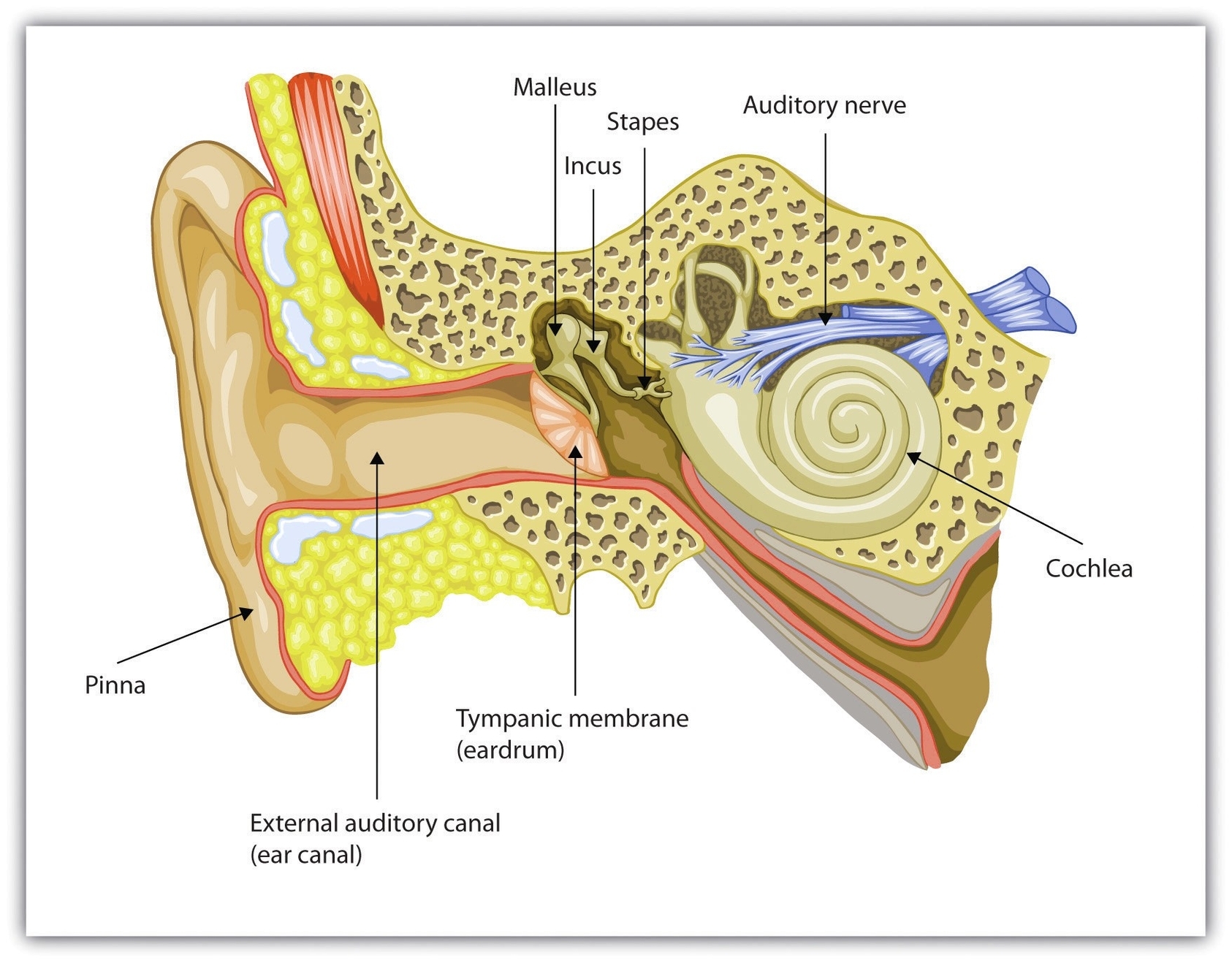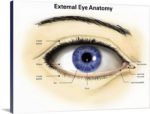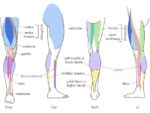Anatomy of the Human Ear
The human ear is a complex organ that serves two primary functions: hearing and maintaining balance. It is anatomically divided into three parts: the outer ear, the middle ear, and the inner ear.
1. Outer Ear
The outer ear consists of the visible portion called the auricle or pinna, which projects from the side of the head, and the short external auditory canal. The inner end of this canal is closed by the tympanic membrane, commonly known as the eardrum. The function of the outer ear is to collect sound waves and guide them to the tympanic membrane.
2. Middle Ear
The middle ear is a narrow air-filled cavity in the temporal bone. It is spanned by a chain of three tiny bones the malleus (hammer), incus (anvil), and stapes (stirrup), collectively known as the auditory ossicles. This ossicular chain conducts sound from the tympanic membrane to the inner ear.
3. Inner Ear
The inner ear, also known as the labyrinth, is a complicated system of fluid-filled passages and cavities located deep within the temporal bone. It consists of two functional units: the vestibular apparatus, which contains the sensory organs of postural equilibrium, and the cochlea, which contains the sensory organ of hearing. These sensory organs are highly specialized endings of the eighth cranial nerve, also known as the vestibulocochlear nerve.
Function of the Ear
The primary function of the ear is hearing, which involves the conversion of sound waves into electrochemical impulses, a process known as transduction. The ear also maintains the sense of balance or equilibrium. The vestibular apparatus provides information about the position and movements of the head, while the cochlea provides hearing information.
Clinical Relations
Various conditions can affect the ear, including otitis (inflammation of the ear), blockage of the auditory (Eustachian) tube, and high tone deafness. Understanding the anatomy of the ear is crucial for diagnosing and treating these conditions.
In conclusion, the human ear is a remarkable organ that plays a vital role in our ability to interact with our environment. Its complex structure enables it to perform its dual functions of hearing and maintaining balance, making it an essential part of our sensory system..



